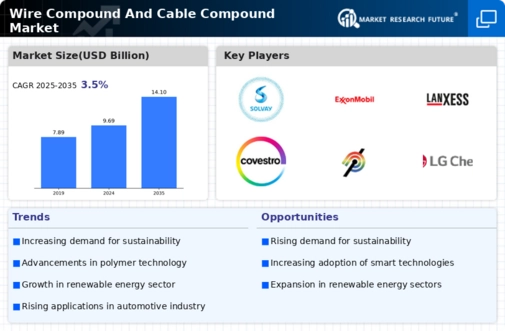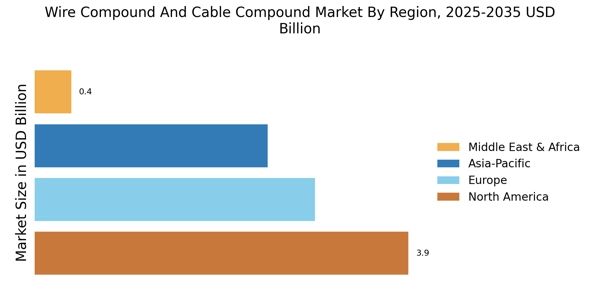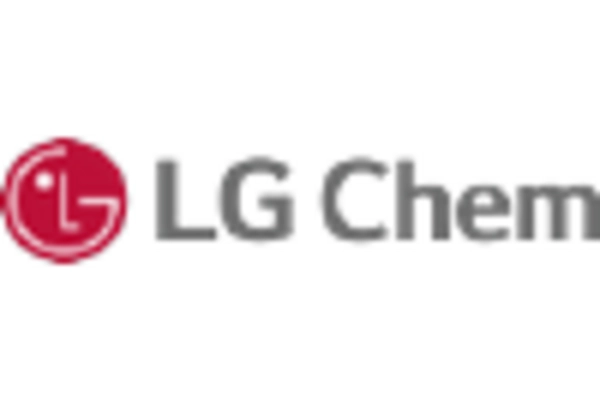Increasing Regulatory Standards
The Wire Compound And Cable Compound Market is being shaped by the increasing regulatory standards aimed at ensuring safety and environmental sustainability. Governments and regulatory bodies are implementing stringent guidelines that require manufacturers to adhere to specific quality and performance benchmarks. This trend is particularly evident in sectors such as construction and automotive, where compliance with safety regulations is paramount. As a result, manufacturers are compelled to invest in high-quality materials and production processes that meet these standards. This shift not only enhances product reliability but also fosters innovation, as companies strive to develop compounds that comply with evolving regulations while maintaining competitive advantages in the market.
Rising Demand for Renewable Energy
The increasing emphasis on renewable energy sources is driving the Wire Compound And Cable Compound Market. As countries strive to meet energy transition goals, the demand for efficient and durable wire and cable compounds is surging. For instance, the International Energy Agency projects that renewable energy capacity will continue to expand, necessitating advanced materials that can withstand harsh environmental conditions. This trend is likely to propel the market forward, as manufacturers seek to innovate and provide solutions that align with sustainability objectives. Furthermore, the integration of renewable energy systems, such as solar and wind, requires specialized wire compounds that enhance performance and longevity, thereby creating a robust market opportunity.
Growth in Electric Vehicle Production
The Wire Compound And Cable Compound Market is experiencing a notable boost due to the rapid growth in electric vehicle (EV) production. As automotive manufacturers pivot towards electric mobility, the demand for high-performance wire and cable compounds is escalating. According to industry reports, the EV market is projected to witness a compound annual growth rate of over 20% in the coming years. This surge necessitates the development of specialized compounds that can handle higher voltages and improve energy efficiency. Consequently, manufacturers are investing in research and development to create innovative solutions that cater to the unique requirements of the EV sector, thereby driving market growth.
Technological Innovations in Material Science
Technological innovations in material science are playing a pivotal role in shaping the Wire Compound And Cable Compound Market. Advances in polymer chemistry and composite materials are enabling the development of compounds with enhanced properties, such as improved thermal stability and resistance to environmental factors. These innovations are crucial for applications in various sectors, including construction, automotive, and electronics. As manufacturers adopt cutting-edge technologies, the market is likely to witness a shift towards more efficient and sustainable solutions. Furthermore, the integration of smart technologies into wire and cable systems is expected to create new avenues for growth, as these innovations cater to the evolving needs of consumers and industries alike.
Expansion of Telecommunications Infrastructure
The ongoing expansion of telecommunications infrastructure is significantly influencing the Wire Compound And Cable Compound Market. With the increasing reliance on high-speed internet and data transmission, there is a growing need for advanced wire and cable compounds that ensure optimal performance. The demand for fiber optic cables, in particular, is on the rise, as they offer superior data transfer capabilities. Market analysts indicate that the telecommunications sector is expected to invest heavily in infrastructure upgrades, which will likely create substantial opportunities for wire compound manufacturers. This trend underscores the importance of developing compounds that enhance signal integrity and durability, thereby supporting the overall growth of the market.


















Leave a Comment